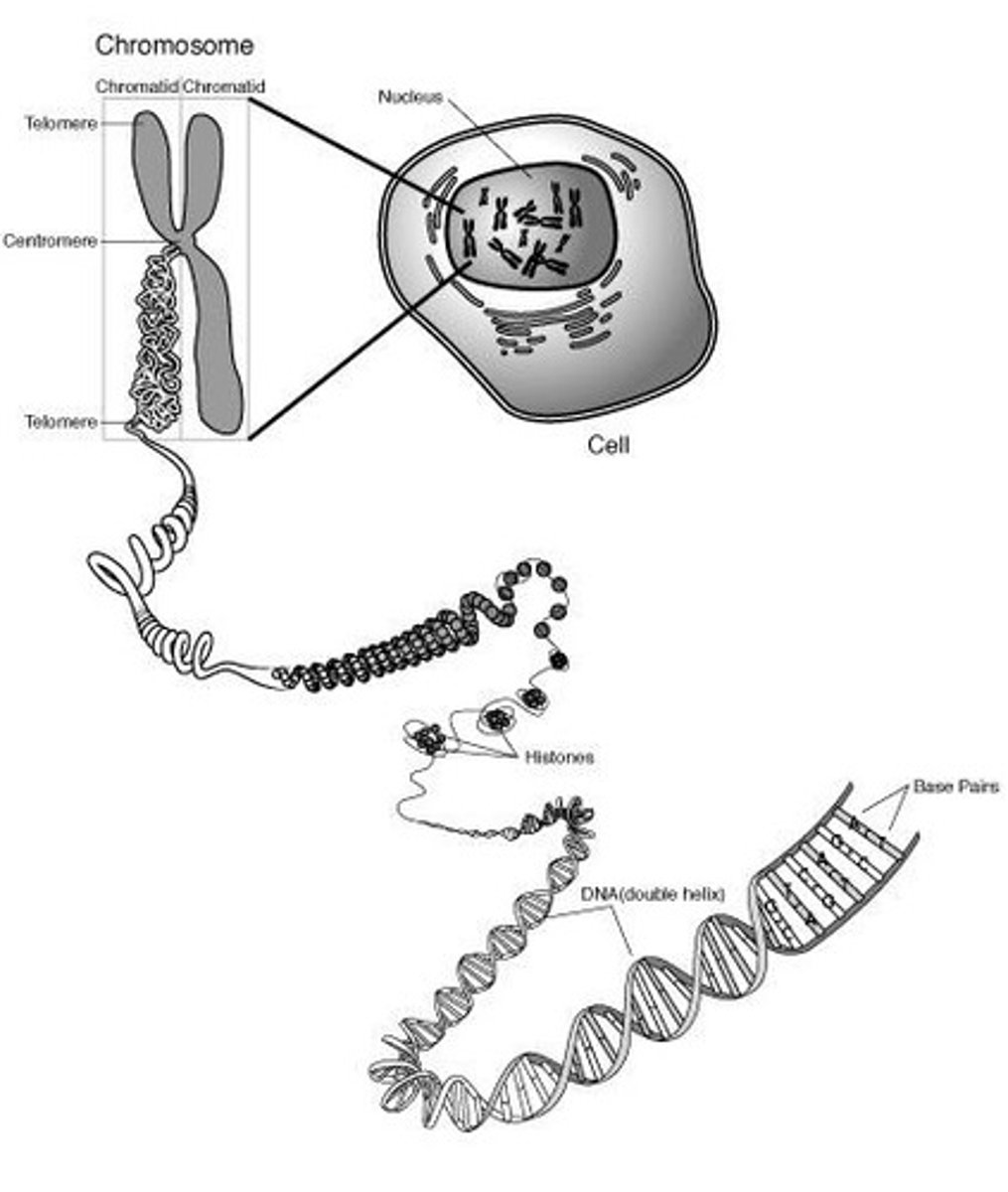DNA Extraction Techniques and Protocols
1/53
There's no tags or description
Looks like no tags are added yet.
Name | Mastery | Learn | Test | Matching | Spaced |
|---|
No study sessions yet.
54 Terms
Chromosomes
Structures organizing DNA in the nucleus.

Base pairs
Units of DNA structure; 6 billion in chromosomes.
DNA typing
Identifying biological material donor.
STR profile
Short Tandem Repeat profile for DNA analysis.
DNA Isolation Goals
Lyse, separate, and Isolate
Lyse cells
Breaking cells to release DNA.
Isolate
Removal of proteins from DNA samples.
Nuclear DNA
DNA that is present in the nucleus of a cell and that is inherited from both parents
Nuclear DNA is present in all cells
false; not present in erythrocytes
A haploid cell has ________ Nuclear DNA
3 x 10^9 bp
All samples must be carefully handled regardless of the DNA extraction method to avoid:
- Sample-to-sample contamination
- Introduction of extraneous DNA
The extraction process is where the DNA sample is more susceptible to contamination in the laboratory than at any other time
true
MtDNA
Mitochondrial DNA, 16,000 base pairs long.
2-10 copies
A mitochondria has _____ mtdna copies and there are ______ mitochondria per cell
2-10, 10^3-10^4
MtDNA is especially useful in
hair shaft and bones
Haploid DNA
Single set of chromosomes, 3 billion bp, 3 picograms
Diploid DNA
Two sets of chromosomes, 6 billion bp, 6 picograms
How much DNA is required for DNA profiling (PCR)?
.5-1 ng
How many diploid cells are needed to obtain at least 1 ng (1000 pg) of DNA for a DNA profiling assay, given that the amount of nuclear DNA in a diploid cell is approximately 6.6 pg?
A) 100 cells
B) 150 cells
C) 200 cells
D) 250 cells
B) 150
RFLP requires 25-50ng
Restriction Fragment Length Polymorphism analysis.
DNA extracted from cell
if good extraction, M^R= 10^7, equivalent to ~ 20kb
Amount of DNA in Blood (leukocytes)
- 5 x 10^6 cells/ml
- range 30-60 µg/ml
Amount of DNA in semen
-50 x 10^6 cells/ml
(150 µg/ml)
- 5 x 10^6 leukocytes/ml in vasectomized individuals
The amount of DNA in saliva and tissues that are not blood or semen depends on
number of cells
chromosome is __ µm in length
5
DNA in chromosome is __ cm in length
5
DNA is compacted by
histones or protamines
All extraction strategies need to remove proteins
true
Factors Affecting Quantity and Quality of DNA
-Initial size of stain
- Environmental influences
- Extraction protocol
Environmental influences
- sunlight
- heat/moisture
• promotes growth of microorganisms
• deleterious effects of nucleases
environmental influences exacerbated by age of stain
true
Extraction protocol
shear forces--> nucleases --> normal extraction in efficiencies--> analytical prowess--> co extraction of inhibitors
DNA Extraction Methods
- Organic
- Chelex
- FTA
- Solid-phase extraction
Which type of DNA was effectively obtained using organic extractions?
High MW DNA
Organic extraction
Uses phenol/chloroform for DNA isolation.

Generic DNA Extraction Protocol
Solubilize cellular components
- denature/hydrolyze proteins
- remove denatured proteins
- clean the DNA (purification)
- quantitate the DNA (how much DNA?
Solubilization of Cellular Components
Buffer, EDTA, detergent, Heat
EDTA
chelating agent used to prevent Mg2+ ions required for nuclease activation, protecting it from degradation
Buffer
- maintain a stable pH level during the process so DNA doesn't denature
- help cells lyse & separate DNA from proteins
- produces pure, isolated DNA
SDS (detergent)
solubilizes cell, organelle membranes, and denatures protein to release DNA
Differential extraction
Isolating sperm DNA from mixed samples.
Proteinase K
Enzyme for digesting proteins during extraction to increase purity and yield of DNA.
*Added after buffer
Proteinase K acts on denatured proteins to produce
oligopeptides and amino acids
Phenol/chloroform
Deproteinizes dna
- Partition of solutes into the upper aqueous and lower organic phases
Where are denatured proteins found when using phenol in DNA extraction?
In phenol and at the interphase
Chaotropic agents
Disrupt hydrogen bonds, aiding protein denaturation.
- Ex: urea, guanidine
Chelex Extraction
An alternative and inexpensive procedure for DNA extraction.
What happens to magnesium ions during Chelex Extraction?
Mg ions are drawn in and bound by the resin which act as chelating group.
Issues with chelex extraction
-left dna single stranded
- too concentrated blood resulted in pcr inhibition
FTA Paper Extraction
a method for collecting and preserving DNA samples using filter paper cards
FTA paper extraction process
The cards are treated with chemicals that lyse cells and denature proteins, while protecting the DNA from degradation.
solid phase dna extraction
DNA is immobilized on a solid support, beads, or columns
Differential extraction process
1. remove portion of mixed stain
2. cell lysis buffer (sds, edta, and proteinase K)
3. centrifuge
4. remove supernatant (non-sperm fraction)
5. Another round of cell lysis buffer + DTT
6. sperm fraction
DTT
lyses sperm heads